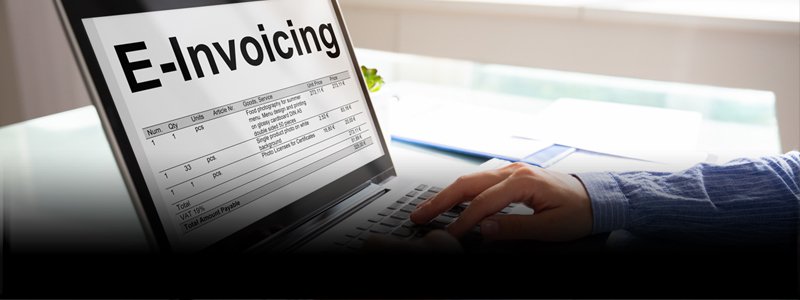xSuite Blog
Expert Knowledge on Digitalization & Automation of Business Processes

xSuite Blog
Expert Knowledge on Digitalization & Automation of Business Processes
What Exactly is E-Invoicing?
Topic: Digitalization | E-Invoicing

Industry experts have recognized the importance of e-invoicing for quite some time now. In this article, we want to help you get to grips with the basics: What exactly is meant by the term “e-invoicing”? What is the key difference between an e-invoice and a PDF invoice? And what are the advantages of e-invoicing?
What is an e-invoice?
“Electronic invoice” or “electronic invoicing” might not sound like much of a new development to you. After all, there’s a great likelihood that just about all the invoices you receive nowadays are probably in electronic form (e.g. as PDFs), and that they are sent by electronic means (usually e-mail).
So, what exactly is new about e-invoices? When we talk about e-invoices, we are not referring to the scenario described above. In other words, we are not talking about e-mailed or PDF invoices, but rather machine-readable data files. Generally in XML format, such files have been specially developed and optimized for automated invoice processing.
What are the advantages of e-invoicing?
The benefits are clear when we compare e-invoices to paper or PDF invoices. The workflow for processing the latter generally looks something like this: First, the PDF or scanned paper document goes through a data extraction stage, whereby optical character recognition (OCR) technology is used to capture a document’s content. As its name suggests, OCR software examines documents and attempts to decipher letters and numbers.
The captured content is then converted — in other words, formatted and structured — so that it can be entered into the appropriate fields of your ERP system.
E-invoices allow you to skip these steps entirely, as there is no longer any need to digitize, interpret and convert content. Instead, the content can be immediately transferred into the right fields of your ERP system.
This is where a key benefit of e-invoices becomes evident. Businesses have come to know the process of digitization, data extraction, and conversion as laborious and prone to error. Even the best OCR solutions never achieve a 100% recognition rate. Forgoing this source of error from the outset allows you to get rid of the main stumbling block in automated invoice processing. E-invoicing sets you up for a dramatic increase in the number of invoices processed automatically in the background while you get on with other tasks.
What is keeping organizations from embracing e-invoicing?
Invoice exchange always involves two parties. However, it is the recipient who reaps the most benefits from e-invoicing. After all, by receiving invoice data in a machine-readable format, recipients can simplify and speed up their processes considerably… which is why suppliers will not tend to initiate e-invoicing (and we would like to suggest that if they do offer to send you e-invoices, you should take them up on it immediately).
Another reason why e-invoices are not used more extensively is that they have been optimized for fully automated processing by IT systems. This means that you need an IT system that can accept and process e-invoices. What decision-makers might not realize is how easily this apparent hurdle can be overcome. The gap can be filled with a viewer which displays XML files in a readable format. Also, some hybrid invoice formats even combine machine-readable data with a PDF for manual processing.
When you receive e-invoices, it is possible to just view them while continuing to rely on manual processes. However, if you restrict your use of them this way, you will be wasting a valuable chance to boost efficiency. The right software solution will enable you to automate the steps of e-invoice processing and save you time and manual labor. And as mentioned above, e-invoices remove one of the main sources of error in invoice processing: digitization. In short, e-invoices have the potential to automate your invoice processes and optimize them in ways that a mere PDF invoice simply cannot… an opportunity to be capitalized on!
Topic
- AP Automation (28)
- Digitalization (28)
- SAP (18)
- Cloud (15)
- S/4HANA (10)
- E-Invoicing (9)
- Skills Shortage (6)
- Supplier Portal (6)
- AI and Machine Learning (5)
- Procurement (5)
- Invoice (5)
- GDPR (4)
- Software Development and Implementation (4)
- xSuite Group (4)
- Archiving (3)
- Usability and User Experience (3)
- RPA (2)
- Dynamic Discounting (1)
- Blockchain (1)
- Incoming Mail (1)


